18 May 2014
Intending to simply refresh myself with the ruleset I'd developed so I could sit down and write a draft of rules for blind playtesting, today's session ballooned into a three-match throwdown between Blue and Orange. By a very narrow margin, Orange won two of three matches, and it could have gone much closer than that (as Blue actually won more points than Orange overall).
But enough about the manufactured drama...Here are some insights gained from today's three two-player matches.
- The full 19-hex map was too large for a two-player game. I reduced it to a 14-hex board, simply "shaving off" five hexes from one side of the large board. It's built the same way, but it looks more oblong. See the last four photos (sessions B and C).
- I'm debating on allowing a 2-for-1 replacement rule. If passed, a player could remove one opponent token from a hex they control for the cost of 2 move/populate. I'd like to see this in action in a game with other players instead of just me simulating two sides of a match before I do anything definitive. This would be a major change, and I'm uncertain that it would add that much to the game itself, simply slowing things down instead.
- Tie-breaker hierarchy is as follows, for now: most cards remaining in final hand, highest sum of numbers (with or without "+" signs) on all cards in final hand, highest sum of VP on Homemaker Tokens, highest total of Cave-ins controlled.
GAME REPORTS
Session A: Blue 42, Orange 36.
This is the game where I decided that the 19 hexes was too large for two players. There simply wasn't enough action and tension involved, since there was so much room to spread out and go for non-conflicting hexes. On occasion hexes were removed via the HAWK ATTACK, but generally speaking the game lacked a lot of engagement because there seemed too little competition between the two opponents.
Here's how things looked at the start of the game: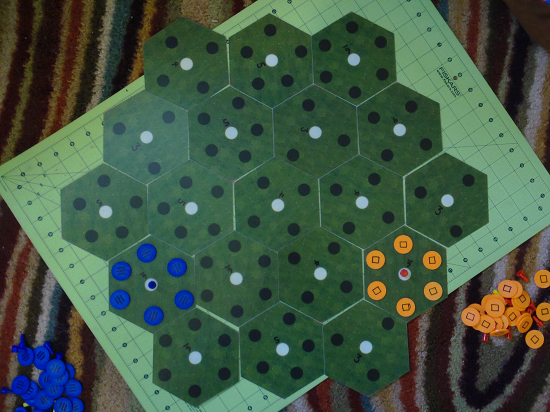
Here's how things looked at the end of it. Many hexes were left untouched.
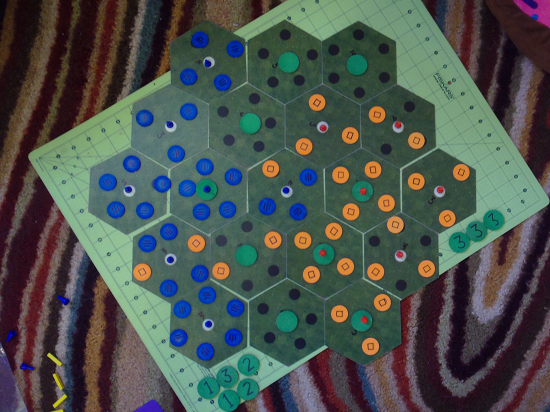
Session B: Blue 29, Orange 30.
First game with a smaller board. A total of 14 hexes are used. Players will choose their starting positions after the initial 7 hexes are laid down, then fill in the last five hexes to make an oblate/oblong hexagon.
The game plays much tighter and purposeful, with little time before the two players begin to seriously interact. There were some surprise takeovers thanks to well-played HAWK ATTACK cards and follow-up forays into an opponent's back field hexes.
Here's how things looked at the start of the match:
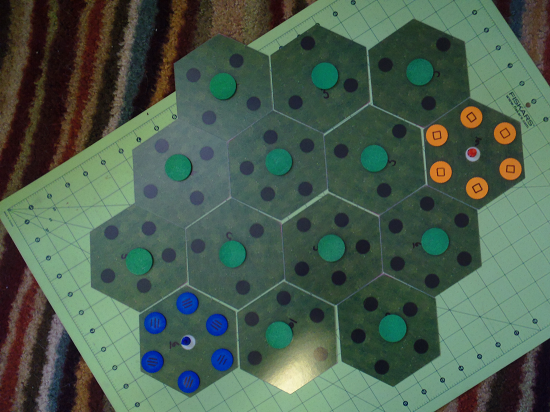
At the end, Orange won out by a single point. Shrinking the game board was a significant asset to the competitive nature of this match, and I'm definitely sticking with that change.
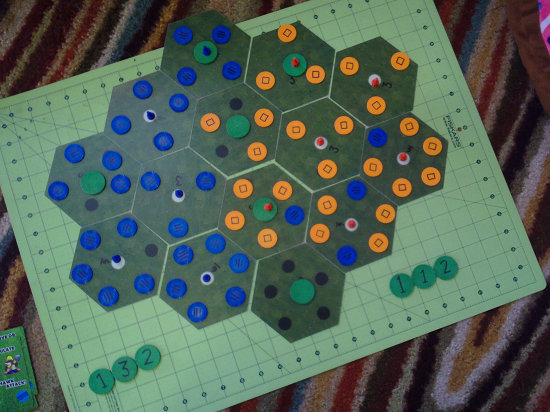
Session C: Blue 39, Orange 41.
What a throw-down! There was a TON of interaction in this match: takeovers, HAWK ATTACK cards, near-game-enders swayed only by the number of remaining hexes with Homemaker Tokens on them...I was very satisfied with this match and how it developed.
Here's the match at the beginning:
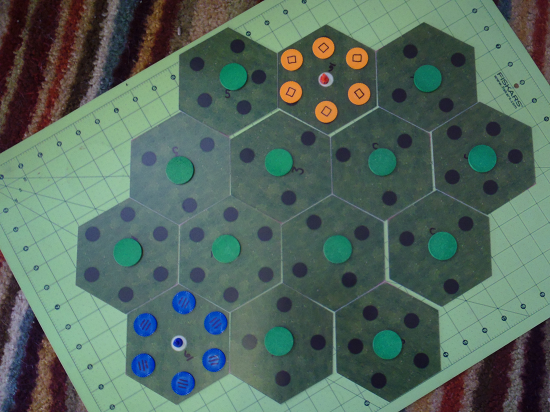
Here's how things were at the end. Note the Orange hex at the far left side of the game board...Wasn't that Blue's starting hex?!?!
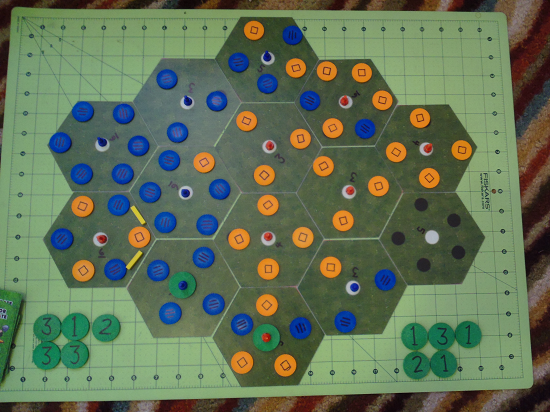
I'm VERY pleased with how things are shaping up...Now it's time to start cracking on that ruleset! :D


